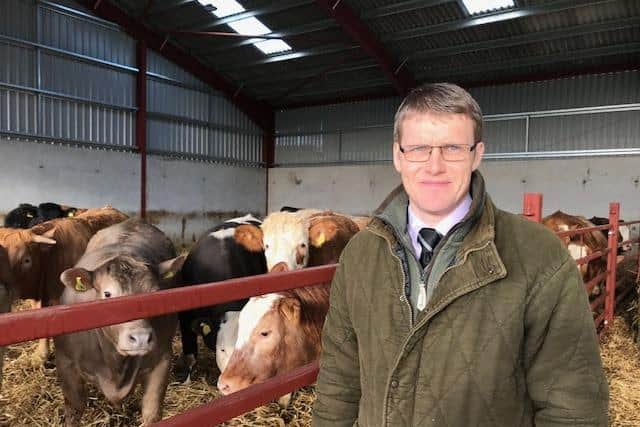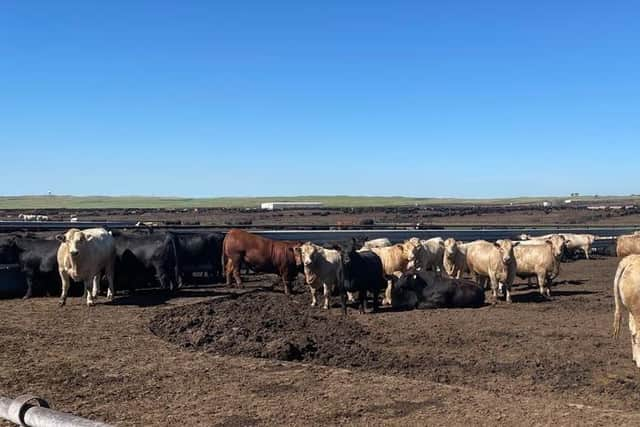What UK farmers can learn from the land of the cowboy
and live on Freeview channel 276
David MacKenzie, beef and sheep director at animal nutrition expert Harbro, is encouraging UK farmers to look at ways of improving feed presentation and drinking water hygiene.
David’s eyes were opened on a recent visit to the US, where he visited operations in the cattle heartland of Texas, Kansas, Nebraska and Colorado.
Advertisement
Advertisement
“The purpose of the trip was to look at the most progressive nutritional and management advances that are being put into practice across the water,” said David.


“The beef industry in the US is enjoying a real confidence boost going by current cattle pricing.”
David said although there were huge differences between the US and UK, especially in terms of government regulation and traceability, he believed British farmers could learn lessons from the States when it came to the basics of food and drink.
“Management and attention to detail on these units is outstanding but is kept simple, understandable and easy to follow,” he said.
Advertisement
Advertisement
“One manager said they follow a system to feed, check and clean the cattle and if they improve how staff are doing their job, the performance of the cattle improves.


“They start with the drinking water, with people employed solely to attend to the water troughs which are emptied and cleaned every week.
“Cattle are fed fresh feed two or three times per day and cowboys on horseback go through each pen everyday checking individual animals.”
David said attention to cattle feed intakes were a priority, with total pen intakes recorded and detailed 24-hours-a-day.
Advertisement
Advertisement
“The time it takes cattle to clear feed bunkers is recorded, which allows the next feed ration to be adjusted to take into account weather conditions and reduce the amount of wastage,” he said.
“Maize makes up 60-70 per cent of the diet, which is heated and flaked alongside by-products from the bioethanol production, maize silage or Alfalfa with minerals and fats.”
When animals arrive on site, David said they undertake animal health protocols and are batched in similar sizes according to their sex.
From the day they enter, animals have a projected day of exit as they work on an expected performance depending on breed and weight.
Advertisement
Advertisement
David said the overwhelming scale of seeing cattle as far as your eye can see, all under the management of one business, was “awe-inspiring”.
“I visited three sites, one in the Texas panhandle south of Amarillo under the employee owned Cactus Feeders; the privately owned North Platte Feeders in Nebraska and the massive Five Rivers Cattle business at their site at Kersley, Colorado,” he said.
“Once you catch your breath and start taking it in, you have to remind yourself that while it’s just people and cattle, they have so much more.”